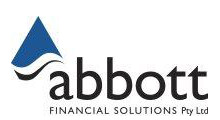The economic impact of COVID-19 has been keeping a lid on interest rates in recent years. But they were on a downward trajectory even before the pandemic, with the last increase coming in late 2010. In fact, interest rates have been so low for so long that a generation of Australian home buyers has grown up with no experience of rising rates.
But sadly, all good things must come to an end. Interest rates have begun to rise following the Reserve Bank of Australia’s decision to increase the cash rate for the first time in over a decade. And with high household debt levels, it could make life difficult for millions of Australians as regular mortgage repayments start to increase.
But the good news is there are ways you can structure your home loan and adjust your spending to help with rising repayments as the new rate landscape takes shape.

What’s the official cash rate?
The official cash rate sets the interest rate for overnight transactions between banks. It’s a tool used by the RBA to influence economic activity and manage inflation.
An increase in the official cash rate generally means an increase in the cost of borrowing money. So when the RBA changes the official cash rate, the banks tend to follow suit and change their lending rates.
How do banks set interest rates?
The official cash rate isn’t the only factor that influences bank lending rates, but it’s one of the most important.
To make money, banks need to lend money out at a higher rate than they borrow – this is why the interest rate you receive on your savings account tends to be lower than the interest rate you pay on your home loan. So an increase in the cost of borrowing money can affect you in different ways, depending on whether you’re a saver or a borrower.
If you have a savings account or you’re thinking of taking out a term deposit, you could start to receive more interest on the money you’ve lent to the bank. But if you have a home loan you could start to pay more interest on the money you’ve borrowed from the bank.
Why are interest rates rising?
The RBA is looking to control inflation in a bid to stabilise the Australian economy, which is seeing higher prices, lower unemployment and signs of potential wage growth. Check out AMP Chief Economist Shane Oliver’s recent article about the background to rate rises and what we can expect over the next 18 months.
What do rising rates mean if you have a home loan?
If you have a variable rate loan or your fixed rate loan is about to reach the end of its term, you may find your repayments increase and you have less discretionary income to spend on other things.
What can you do to reduce the impact of rising interest rates?
1. Tailor your home loan to suit you
The way you structure your home loan could help you pay less interest in the long run and take years off your mortgage. As we see rates start to increase, it’s a good idea to think carefully about what type of loan best suits your needs – fixed, variable, or split. It’s a big decision and could have a significant impact on your future repayments and household budgeting as rates rise.
Fixed rate loans
A fixed rate loan has a set rate even if interest rates rise.
- You can lock in your interest rate for a period of time – generally one to five years – depending on factors such as the total amount borrowed and the overall loan term.
- You can choose to fix your rate again at the end of the fixed-rate term, or let it roll to a variable rate.
A fixed rate home loan not only gives you the certainty in your repayments, it could also help you manage your household budget more easily. But you usually don’t get the flexibility to make extra repayments so you can’t pay off your loan faster by making additional repayments. And you might also be up for break costs if you want to make any changes such as exiting your loan before it ends.
Variable rate loans
The interest rate you pay over the life of your loan can change as banks vary their lending rate. So if rates rise, so will your repayments.
A variable home loan can be more difficult to budget for, but tends to be more flexible so you may be able to:
-
make extra repayments to pay your home loan off faster
-
access these extra repayments via a redraw facility
-
open an offset account, which you can link to your home loan to reduce your interest.
Split loans
A split loan can help to manage the risk of higher repayments by letting you fix some of the loan and leave the rest variable. This could give you the best of both worlds, as a split-rate loan allows you to have rate and repayment certainty on the fixed-rate loan, while taking advantage of the flexibility on the variable-rate loan.
2. Check your spending
Creating a budget could help you get across how much income you’ve got coming in, how much you need for the essentials and where the rest of your money might be going.
This will help you identify if there’s any room for movement and if you could potentially add a little bit extra to your repayments. AMP’s Budget calculator could help you crunch the numbers.
We’re here to help
If you need help managing financially, call us on 07 3245 3438 or AMP has a support hub where you can access a range of resources. Here are some different ways to find what you’re looking for.
Source: AMP June 2022
Important:
This information is provided by AMP Life Limited. It is general information only and hasn’t taken your circumstances into account. It’s important to consider your particular circumstances and the relevant Product Disclosure Statement or Terms and Conditions, available by calling 07 3245 3438, before deciding what’s right for you.
All information in this article is subject to change without notice. Although the information is from sources considered reliable, AMP and our company do not guarantee that it is accurate or complete. You should not rely upon it and should seek professional advice before making any financial decision. Except where liability under any statute cannot be excluded, AMP and our company do not accept any liability for any resulting loss or damage of the reader or any other person. Any links have been provided for information purposes only and will take you to external websites. Note: Our company does not endorse and is not responsible for the accuracy of the contents/information contained within the linked site(s) accessible from this page.


